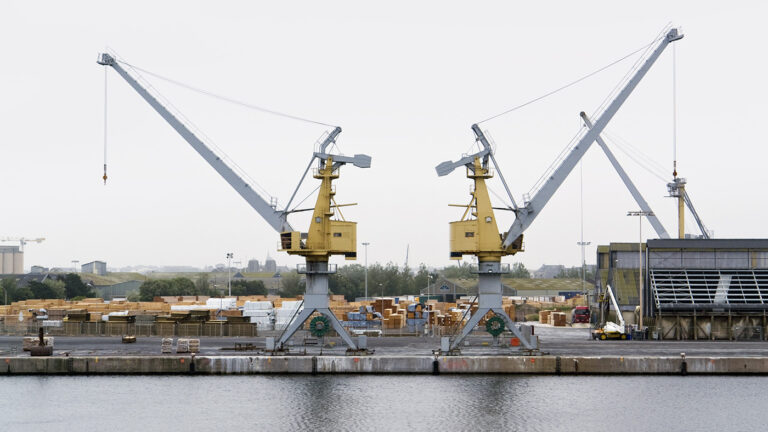Pharma Supply Chain Optimization: Building Resilience in a Complex Industry
Author: Nathan Goldstein
In recent years, the life sciences industry has been drastically impacted by regulatory pressures, complex global networks, and rising production costs. This has forced supply chain leaders to develop aggressive business models that meet both regulatory and market demands while ensuring resilience across all components of their value chain—factors that were previously not considered. This article explores the most common challenges River Logic’s life sciences customers face and the innovative pharma supply chain optimization strategies they are implementing to sustain growth.
Why Pharma Supply Chain Optimization Is More Critical Than Ever
Three Challenges Hindering Supply Chain Resilience
1. Complexity of Decision Space:
The number of decisions in life sciences supply networks can be overwhelming, with regulatory approvals, supplier qualifications, capacity adjustments, and inventory management creating significant complexity. Current tools struggle to optimize across multiple SKUs, constraints, and objectives, making it hard to find the optimal way forward.
2. Misalignment and Fragmentation Across Functions:
Traditional supply chain tools fail to effectively align planning, sourcing, and finance functions. Financial data and supplier contracts are not fully integrated into planning, leading to poor decision-making. Pharmaceutical companies often rely on fragmented tools and manual processes like spreadsheets, which cause errors and longer lead times for scenario planning.
3. Inadequate Consideration of Supplier Contracts:
Despite the critical role of contract manufacturers, many pharmaceutical companies fail to incorporate contracts into their planning processes. This limits the optimization of sourcing strategies, leading to higher costs and more potential supply chain disruptions.
How River Logic Helps Life Sciences Companies Optimize Their Value Chains
The Case for Change: Building Resilience
Building a more resilient pharma supply chain requires more than just plugging gaps in existing processes. It demands a shift towards agility and end-to-end optimization. River Logic’s customers in the pharma space are transforming their supply chains by:
Integrating Contracts, Constraints, and Financials into Optimization
-
Adopting an end-to-end approach to the pharmaceutical and biomanufacturing network means considering all aspects of the supply chain—from supplier contracts to production and distribution—and understanding how they interact. A holistic model allows pharmaceutical companies to ensure full compliance with regulatory, supplier, capacity, and financial objectives. It also offers deeper insights into which levers drive value and highlights areas where risk management and business continuity planning are essential.
-
Incorporating contracts and renewals into their supply chain strategy allows companies to optimize production by considering not only traditional factors like volume and capacity but also contract terms, such as locations, minimum/maximum volumes, tiered pricing, and lead times. This approach includes contract structuring, which involves evaluating new contracts and extension terms in the context of the entire portfolio before finalizing agreements.
-
Accounting for unique constraints in the design of their supply chain. These constraints may include factors such as the timing and level of approval investments, clinical trial results, market allocation requirements, and inventory aging – all of which contribute to pharma supply chain optimization.
From Cost Reduction to Profit Predictability: A New Mindset
Optimizing the supply chain toward a business objective. Most of our customers in the industry have begun their pharma supply chain optimization journey by prioritizing cost reduction as their primary business objective. However, they understand that achieving resilience may require accepting higher costs to mitigate risks. Focusing solely on reducing the cost of goods sold (COGS) can inadvertently hinder their ability to adapt to market changes, innovate, and align their product offerings with customer needs. These companies are shifting their optimization focus from COGS reduction to predictable profit improvement. They are now evaluating scenarios that assess the trade-offs between profit and cost, particularly for competitive products.
Conclusion: A Strategic Future for Pharma Supply Chain Optimization
Life sciences companies are constantly in a trial-and-error phase, seeking optimal solutions for unexpected scenarios. Front-runners have embraced the shift toward resilience by recognizing that traditional network design tools—primarily focused on logistics and transportation with limited ability to model uncertainty—are no longer sufficient. They have adopted a broader value chain optimization approach—from supplier contracts to distribution, including financial and sustainability aspects—and have actively decided to demonstrate the contribution of the supply chain function to the overall profit, margins, and growth. And now, they can confidently optimize and quantify the impacts of any changes on the value chain structure to build resiliency.
Click here to discover how River Logic’s Value Chain Optimization is the only comprehensive solution designed to drive long-term profitability and achieve corporate goals.



